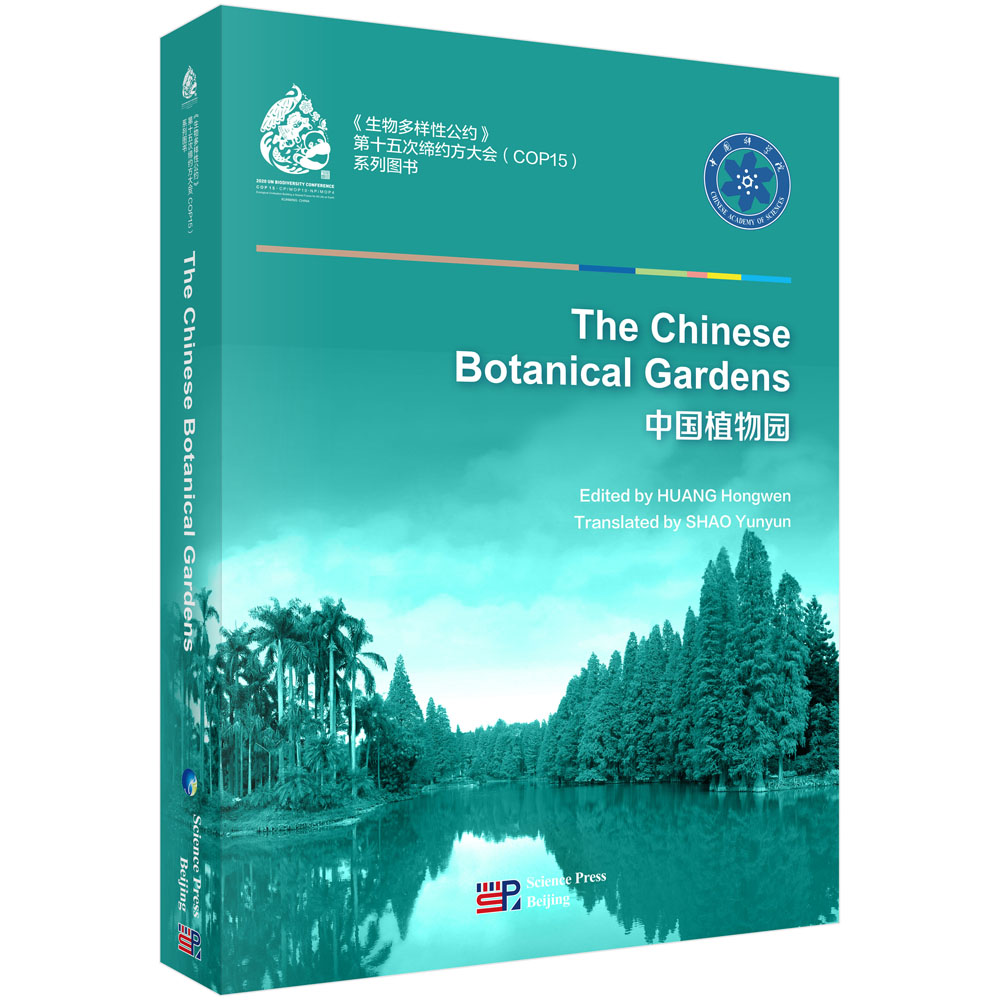
出版社: 科学
原售价: 428.00
折扣价: 338.20
折扣购买: 中国植物园(英文版)
ISBN: 9787030686831

Chapter 1
Outline of the
Chinese Botanical
Gardens
China is one of the most plantrich countries in the world, with about 33,000 higher vascular plants, second only to Brazil, ranking second in the world (Huang and Zhang, 2012). There are 2,322 ferns in China, 250 species of gymnosperms, and 30,503 angiosperms, accounting for 18%,
26%, and 10% of the world total respectively (Huang, 2011). China is known as the “mother of gardens” (Wilson, 2004), with a long history of gardening and gardening civilization. The introduction and cultivation of plants in China’s botanical gardens are almost synchronous with the modern botanical researches in China. With the establishment of the early modern botanical gardens in China, the introduction and collection of plants have begun as early as the beginning of the 20th century. The collection of living plants has inherited the trajectory and achievements of the scientific research of the modern botanical gardens and constituted the foundation and supporting platform for scientific research in China (Xu et al., 2008; Huang and Zhang, 2012).
1.1 Development, distribution and administrative subordination
According to a survey conducted from 2014 to 2017, there are about 161 botanical gardens and arboreta in China, with three peaks of garden construction (Figure 1). 12 botanical gardens that were established before 1949 are still extant, accounting for 7.5% of the existing botanical gardens and arboreta in China, and two-thirds of which were established by foreigners, such as Hong Kong Zoological and Botanical Gardens (1871), Taipei Botanical Gardens (1896), Hengchun Tropical Botanical Garden (1906), Chiayi Botanical Garden (1908), Xiongyue Arboretum (1915), and so on (Xin, 2004; Huang and Zhang, 2012). At the same time, it was also a tough time for Chinese people to construct their own botanical gardens in China. For example, the arboretum of Jiangsu A-type Agricultural School (1915) founded by Chen Rong, and the Jianqiao Botanical Garden (1928, now the botanical garden of Zhejiang University) (Shan et al., 2008) founded by Zhong Guanguang, Lushan Botanical Garden, Chinese Academy of Sciences (1934) founded by Hu Xiansu, Chen Fenghuai, Qin Renchang, etc., mainly take the teaching, plant resource investigation, and plant collection as the main goals.
There were 47 botanical gardens constructed from 1950 to 1964, which was the first peak for the botanical garden construction in China and also the stage of restoration, reconstruction, exploration, and development of modern botanical gardens in China. For example, the restoration of the Lushan Botanical Garden (Jin, 1964; Wang, 1986; Yang, 1994), and the restoration and reconstruction of Nanjing Botanical Garden Mem. Sun Yat-sen (Wang, 1986, 1991; Wang and Hu, 1993). In this period, the construction of botanical gardens in China was led by the modern botanical Gardens of Chinese Academy of Sciences (CAS), such as Kunming Botanical Garden (1938), Shenyang Arboretum of Institute of Applied Ecology (1955), South China Botanical Garden (1956), Beijing Botanical Garden (1956), Dinghushan Arboretum (1956), Wuhan Botanical Garden (1956), Guilin Botanical Garden (1958), Xishuangbanna Tropical Botanical Garden (1959), etc., with the main task of plant resource investigation, introduction and domestication, research and resource application. These botanical gardens also became the core of Chinese modern botanical gardens and the leader of botanical garden construction. At the same time, the botanical gardens of other departments were established successively, such as Medicinal Botanical Garden of Shenyang Pharmaceutical University (1955), Arboretum of Shandong Agricultural University (1956), Beijing Teaching Botanical Garden (1957), Pharmaceutical Arboretum of China Pharmaceutical University (1958), Botanical Garden of Shandong College of Traditional Chinese Medicine (1958) of education departments, the Arboretum of Guangxi Academy of Forestry (1956), Arboretum of the Inner Mongolia Academy of Forestry (1956), Heilongjiang Forest Botanical Garden (1958), Huangshan Arboretum of Anhui Academy of Forestry (1958), Kunming Arboretum of Yunnan Academy of Forestry (1959), Arboretum of Guizhou Academy of Forestry (1963), Nanning Arboretum (1963) of forestry departments, Beijing Botanical Garden (1956), Moshan Landscape Botanical Garden (1956), Hangzhou Botanical Garden (1956), Shenyang Botanical Garden (1959), Xiamen Botanical Garden (1960) of garden departments, Beijing Medicinal Botanical Garden (1955), Xishuangbanna Medicinal Botanical Garden (1959), Xinglong Tropical Medicinal Botanical Garden (1960), Guangxi Medicinal Botanical
Garden (1959) of pharmaceutical departments, Hainan Tropical Botanical Garden (1958) of agricultural departments, Xi’an Botanical Garden (1959) of science and technology departments. China has begun to explore the key points of the construction of botanical gardens, and thei